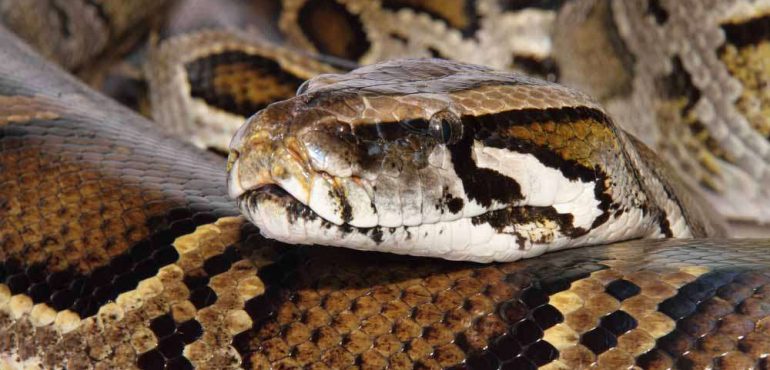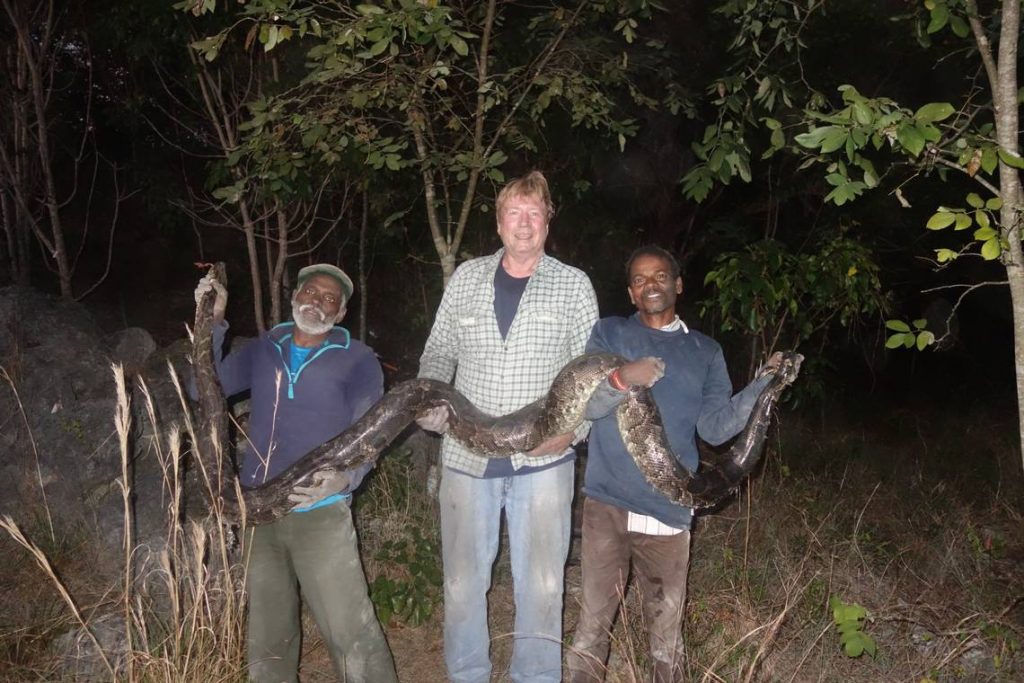What started out as a straightforward genetic study of Florida’s invasive python population has turned up a surprising plot twist: a small number of crossbred Burmese and Indian pythons with the potential to become a kind of Everglades super snake.
For the study, published Sunday in the journal Ecology and Evolution, U.S. Geological Survey researchers examined the tail tissue of 400 snakes captured in South Florida, from the Big Cypress Swamp to the Everglades. While the vast majority appeared to be closely related Burmese pythons — imagine a family reunion packed with first and second cousins — 13 had genetic markers from Indian pythons, a different species that unlike the swamp-loving Burmese snake prefers high, dry ground.
The number is clearly small, but it raises the risk that over time some Everglades snakes could become better suited to a more varied landscape. Scientists call it hybrid vigor.
“If the Indian pythons have a wider range, perhaps these Everglades snakes now have that capability,” said lead author and USGS geneticist Margaret Hunter. “It’s quite interesting and quite surprising, but we don’t know the extent it’s in the population.”
Because evolution seems to abhor certainty, there’s also the possibility the opposite happens through another process, she said, euphemistically referred to as ‘outbreeding depression.’
The study originally intended to look at the genetic make-up of South Florida snakes to better understand how they spread and how to help control them. Pythons started turning up in the 1980s, likely escapees from a South Dade breeding facility or released pets. By 2000, they were declaredofficial residents in Everglades National Park and have since continued to expand north into the state’s expansive water conservation areas and west into Big Cypress. In 2016, they were found breeding in the Keys for the first time.
If snakes in different areas had different DNA, that might tell wildlife managers something about how they’ve been able to reproduce and spread so quickly.
“We were initially looking for the population structure to get some information to shed some light on the invasion dynamics, or the core areas where the population may be breeding and then sending off migrants,” Hunter said.
No surprise, they found low diversity among the snakes that likely are the descendants of the handful of freed snakes, called the founder effect. In small populations, a shrinking gene pool can signal a population headed toward extinction: There is a good Florida example of that. By the 1990s, the number of Florida panthers had dwindled so low that the animals started suffering from the effects of in-breeding, including heart murmurs, reproductive problems and oddly kinked tails. Texas cougars, very close cousins, were imported to add to the gene pool.
But the python population is so large — researchers believe they number in the many thousands based on the steep drop in nearly all small mammals in their range — that low diversity is not impeding the snake’s ability to adapt, Hunter said.
“Such a large population allows them to rapidly adapt,” she said. “If some animals die out because of climatic issues, there are other animals that may not die out.”
But in 13, they found that Indian marker.
“That was unexpected,” Hunter said. “I kept looking at the data to make sure what I was seeing was correct.”
It’s not clear where the species got crossed, she said. In their native ranges, Burmese and Indian pythons have remained mostly distinct either because of the prey they eat or barriers in habitat. But they could breed in the wild. Breeders also frequently cross species to produce more desirable colors and patterns for the pet trade. The snakes may also have hooked up in the Everglades, but Hunter said that seems less likely since the markers she detected, which are only passed down through female snakes, were historical.
Because Hunter and her colleagues focused on genetics, it’s not yet clear how climate will play into the snake’s evolution. Scientists suspect that a warming planet will allow them to roam further north. An upcoming study looking at how the snake has adapted should shed some light, she said. In the meantime, the rapid expansion has provided researchers with a rare window into evolution dynamics.
“All species do this,” Hunter said. “But we’re watching evolutionary progress right in front of us.”
Source: Miami Herald, Full Article







